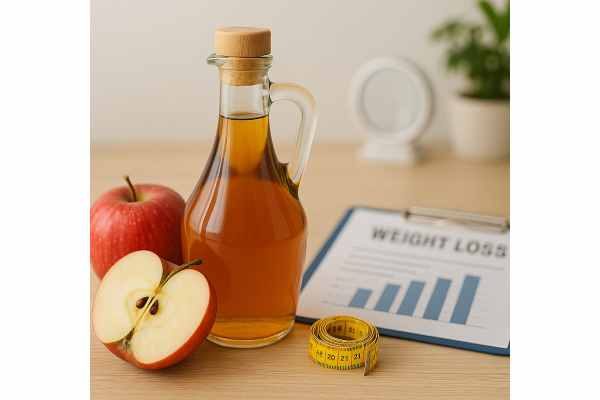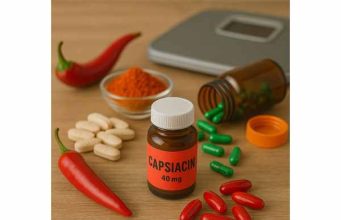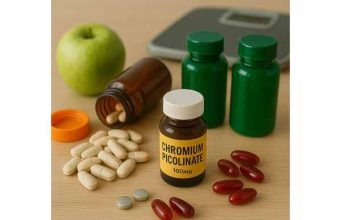Supplements and Medical
Home Supplements and Medical
Supplements and Medical Options for Weight Management
A structured plan for weight management blends nutrition, movement, sleep, and—when needed—targeted therapies. This guide explains what supplements and medical options can deliver, how they differ, and how to choose safely. You will learn expected results, timelines, side effects, and the habits that protect muscle and help you maintain progress. If you need a refresher on the fundamentals, start with our concise guide to safe weight-loss basics. From there, we outline evidence-based tools, from fiber and protein powders to GLP-1 medications and bariatric surgery. The aim is practical and sustainable fat loss, not a brief dip on the scale. Use the sections to match tools to your goals, health history, and budget, then test changes in four- to twelve-week blocks so you can see what works and adjust with confidence.Table of Contents
Read the complete Supplements and Medical Options for Weight Management Guide
Supplements and medical options: basics
Weight changes happen when energy intake and expenditure shift for long enough to reduce body fat while preserving lean tissue. Supplements and medical options influence that balance through a few levers:- Appetite and cravings. Signals from the gut and brain shape hunger, fullness, and reward. Tools in this bucket include fiber supplements, higher-protein replacements, and prescription appetite regulators.
- Absorption. Some therapies reduce how much fat or carbohydrate you absorb.
- Energy expenditure. Caffeine, green tea catechins, and capsaicinoids can nudge calorie burn.
- Body composition. Protein and resistance training preserve muscle; some therapies make it easier to eat in a deficit without sacrificing strength.
- Lifestyle foundations. Protein-forward meals, fiber-rich sides, resistance training two to three times weekly, regular steps, alcohol limits, and adequate sleep. Many people lose 5–10% of body weight in six to twelve months when these pieces line up and the environment supports them (planned groceries, set mealtimes, fewer liquid calories).
- Over-the-counter supplements. Useful choices are targeted and simple: fiber (glucomannan or psyllium) to improve fullness; protein powders to hit daily targets without extra calories; caffeine timed before activity to improve output; and possibly green tea extract for a small thermogenic effect. Effects are modest—often one to three percent extra loss over months—yet meaningful when they make adherence easier. Quality matters. Look for third-party testing seals and transparent labels (dose per serving, full ingredient names, stated forms).
- Medical therapies. Prescription medications (GLP-1s, tirzepatide, orlistat, phentermine-topiramate, naltrexone-bupropion, and others) and bariatric surgery. These options deliver larger average losses, with corresponding monitoring requirements.
- Supplements: Incremental help. They do not replace meals with whole protein sources, vegetables, and high-fiber carbs; they make those habits easier. Pair with strength training to protect lean mass.
- Medications: Typical results range from about five to fifteen percent of starting weight, depending on the drug, dose, and your consistency with food and training. Benefits last as long as treatment and routines continue.
- Surgery: The most potent option, often twenty to thirty-five percent total weight loss over one to two years, plus durable improvements in conditions like type 2 diabetes and sleep apnea when follow-up is strong.
- Review your medical history (blood pressure, heart disease, stroke risk, mental health, pregnancy potential, gallbladder or pancreatic history).
- Identify your main friction: persistent hunger, evening snacking, liquid calories, weekends, or travel. Match the mechanism to the friction.
- Start with the least invasive tool likely to work, and escalate only if you are not reaching clinically meaningful progress (often ≥5% in twelve to sixteen weeks on a therapeutic dose or consistent plan).
- Meals: Anchor each meal with 25–40 g protein and a fiber source; pause mid-meal; stop at comfortable fullness.
- Movement: Two strength sessions weekly (push, pull, legs), plus daily steps after meals when feasible.
- Add-ons: If hunger remains high, layer in fiber or a protein shake. If workouts lag, consider pre-activity caffeine (avoid within eight hours of bedtime).
- Monitor: Track weight weekly, waist monthly, and one or two health markers (blood pressure, fasting glucose if appropriate). Adjust only one lever at a time.
Do these options work long-term?
Long-term success depends on matching tools to your biology and routine, then making those tools easy to keep. Weight regulation is not static; your body adapts by increasing hunger signals and trimming energy expenditure as you lose fat. Maintenance is therefore a skills problem as much as a biology problem. The following patterns sustain results: Lifestyle maintenance that lasts- Protein and strength as anchors. Aim for ~1.6–2.2 g/kg ideal body weight daily, split across meals, with two to three resistance sessions weekly. Preserving lean mass keeps resting energy expenditure higher and improves shape and function.
- Environment design. Stock default meals (frozen fish, eggs, Greek yogurt, pre-washed greens, microwavable legumes). Keep calorie-dense snacks out of sight or out of the house. Pre-commit to grocery delivery or a repeating list.
- Boundaries for liquid calories and alcohol. Replace sweetened drinks with water, unsweetened tea, or zero-calorie options most days; set an alcohol budget and keep drinking days predictable.
- Fiber makes lower-calorie meals more satisfying and steadies appetite between meals.
- Protein shakes provide a quick, low-calorie way to hit targets when travel or stress compresses your schedule.
- Caffeine before training improves session quality; used sparingly, it counters fatigue without driving appetite later.
- Verify protein and fiber targets for seven days.
- Add one resistance session or one set per movement; add ten-minute walks after two meals.
- Audit liquid calories and weekend habits.
- If you are on medication, confirm you are at a therapeutic dose and tolerating it; if not on medication and criteria are met, discuss starting one.
- If you are leaner and performance matters, consider adding creatine to protect strength and training quality (learn more in creatine during weight loss).
Which option should I try first?
The best starting point depends on your health status, current habits, and what makes calorie control difficult. Use this stepwise framework to choose a first move, then escalate only if needed. Step 1: Clarify the problem you are solving- Persistent hunger or “food noise.” Meals feel unsatisfying; snacking fills the gaps.
- Reward-driven eating. Stress, boredom, or cues (TV, social events) lead to overeating.
- Planning gaps. Travel, late work, or childcare make cooking and shopping inconsistent.
- Liquid calories and alcohol. Sugary drinks or frequent drinks push intake above your target.
- Low training bandwidth. Limited time or energy for strength or meal prep.
- Protein-first pattern. Build each meal around a lean protein (25–40 g) plus a high-fiber side. Keep fruit visible and convenient.
- Strength twice weekly. Focus on big movements (squat/hinge, push, pull) and progressive load.
- Walk after meals. Ten- to fifteen-minute walks improve glycemic control and appetite.
- Replace liquid calories. Switch to water, unsweetened tea, or low-/no-calorie alternatives most days.
- Plan the environment. Set a repeating grocery list; batch-cook proteins; keep a default breakfast and lunch.
- If hunger is the main barrier, add a fiber supplement before meals and consider a daily protein shake. To avoid label traps and under-dosing, skim the quick supplement label basics.
- If training quality lags, time a moderate caffeine dose before workouts and tighten your sleep schedule.
- If planning is hard, use pre-portioned meals or a weekly meal kit to stabilize the first two meals of the day.
- Medication becomes reasonable when BMI is ≥30, or ≥27 with complications (prediabetes, hypertension, sleep apnea, dyslipidemia), and you have tested lifestyle foundations. If insulin resistance or PCOS is present, discuss whether metformin could support your plan and when it does not—see practical details in metformin and weight.
- Choose a mechanism that matches your friction: appetite reduction (GLP-1s, tirzepatide), reward-driven eating (naltrexone–bupropion), absorption reduction (orlistat), or short-term appetite bridging (phentermine, where appropriate).
- At twelve weeks on a therapeutic dose or consistent routine, look for a clinically meaningful change—often ≥5% weight loss or measurable metabolic improvement. If you are not there and adherence has been good, adjust dose, switch classes, or consider a more potent tool under medical supervision.
- Evening snacker with high cravings: Start with a protein- and fiber-anchored dinner, a set bedtime, and a fiber supplement; if hunger remains high and criteria are met, a GLP-1 could be added.
- Social eater with cue-driven overeating: Plan lower-calorie defaults earlier in the day; practice drink limits; consider naltrexone–bupropion if medical review supports it.
- Insulin resistance with prediabetes: Lifestyle block plus metformin may help in select patients; resistance training is essential.
GLP-1 medications: what to expect
GLP-1 receptor agonists reduce appetite, slow stomach emptying, and blunt food reward, making calorie control easier with less mental effort. They are typically dosed as daily or weekly injections with a titration schedule that starts low and increases gradually to reduce nausea and other GI side effects. Expected results and timeline Many users see steady, measurable loss by twelve to sixteen weeks at a therapeutic dose. Average reductions often reach the low double digits as a percentage of starting weight over extended use, especially when protein intake is adequate and resistance training is maintained. Results vary—biology, adherence, dose, and routines all matter. Common side effects and how to manage them- Nausea, early fullness, reflux, constipation, or diarrhea during dose increases.
- Practical fixes: eat slowly; favor lean proteins and lower-fat cooking methods; add fiber and fluids; stop at comfortable fullness; space meals four or more hours apart if early satiety is strong.
- Consider ginger tea or sugar-free mints for nausea; use stool-softening strategies if constipation appears (more fluids, magnesium under clinician guidance).
- Rare but important risks include gallbladder issues and pancreatitis. Do not use these drugs with a personal/family history of medullary thyroid carcinoma or MEN2.
- Keep protein at 1.6–2.2 g/kg ideal body weight to protect lean mass.
- Distribute protein across the day (25–40 g per meal) to offset lower appetite.
- Prioritize resistance work two to three times weekly; short, high-quality sessions beat long, infrequent ones.
- Track non-scale wins: waist, blood pressure, A1C (if relevant), and fitness.
Tirzepatide versus GLP-1: differences
Tirzepatide activates two incretin pathways—GIP and GLP-1—rather than GLP-1 alone. In practice, many people experience stronger appetite control and, on average, greater weight reductions than with first-generation GLP-1s, though individual responses vary. Dosing is weekly with a gradual titration to balance efficacy and side effects. How it feels day to day- Appetite suppression can be pronounced, especially during evenings and weekends when snacking risk is high.
- Smaller portions become satisfying; prioritize lean proteins and produce to avoid under-eating protein.
- Some people report earlier fullness and altered taste; slow eating and smaller plates help.
- Nausea, constipation, diarrhea, and reflux are the most common during titration.
- The same rare but serious risks apply as with GLP-1s (gallbladder disease, pancreatitis). Avoid with a personal/family history of medullary thyroid carcinoma or MEN2.
- If you have type 2 diabetes and take insulin or sulfonylureas, discuss dose adjustments to reduce hypoglycemia risk when starting tirzepatide.
- People with high, persistent hunger and frequent cravings.
- Those seeking improvements in both glycemia and weight.
- Individuals who tried lifestyle changes plus a GLP-1 and did not achieve adequate results or tolerability.
- Ramp the dose per schedule; do not rush increases because “more” is not always “better.”
- Keep protein intake high and resistance training regular to guard against lean-mass loss.
- Keep a brief symptom log during titration (meals, timing, GI effects) to fine-tune dose steps with your clinician.
- Plan for sustained use if the medication is helpful and well-tolerated.
Prescription choices beyond GLP-1s
When GLP-1s or tirzepatide are unsuitable, unavailable, or poorly tolerated, other prescriptions can help. Each class has a distinct mechanism, side-effect profile, and monitoring plan. Align the tool with your main barrier and medical history. Phentermine (short-term appetite support) A sympathomimetic that reduces hunger and can boost focus during early weight-loss efforts. Typical issues include dry mouth, insomnia, elevated heart rate, and increased blood pressure. It is often avoided in people with cardiovascular disease, uncontrolled hypertension, hyperthyroidism, glaucoma, or anxiety disorders. Some clinicians use brief phentermine courses to support initiation of lifestyle change, then taper. Phentermine–topiramate (Qsymia) Combines a stimulant with topiramate, which reduces appetite and alters taste. Average losses typically exceed phentermine alone. Side effects can include tingling, taste changes, and cognitive slowing. It is teratogenic; people who could become pregnant must use effective contraception and undergo regular pregnancy testing. For dosing schedules, expected outcomes, and monitoring, see the concise phentermine–topiramate guide. Naltrexone–bupropion (Contrave) Acts on reward and craving pathways, useful for emotional or cue-driven eating. It may raise blood pressure and heart rate and can interact with antidepressants, seizure history, or alcohol use. Screening for psychiatric history and current medications is essential. Learn practical selection criteria and dose steps in naltrexone–bupropion basics. Orlistat A non-stimulant lipase inhibitor that reduces dietary fat absorption. It works best when you keep dietary fat moderate; exceeding that often causes oily stools and urgency. Many people need supplementation of fat-soluble vitamins (A, D, E, K) and regular follow-up. Orlistat can be an option when stimulants are contraindicated or appetite suppressants are poorly tolerated. Metformin Not a primary weight-loss drug but can support modest loss or weight neutrality in insulin-resistant states and PCOS. GI side effects are common at initiation; extended-release forms may improve tolerance. It is often considered adjunctive rather than stand-alone for weight management. Choosing among them- Match mechanism to friction. Reward-driven snacking suggests naltrexone–bupropion; persistent hunger suggests phentermine or phentermine–topiramate; high-fat diets with GI tolerance suggest orlistat.
- Screen thoroughly. Review cardiovascular status, blood pressure, seizure risk, psychiatric history, pregnancy potential, and drug interactions.
- Set checkpoints. At twelve weeks on a therapeutic dose, look for clinically meaningful progress (≥5% loss or improved markers). If not achieved and adherence is good, adjust or switch.
- Baseline and periodic vitals (blood pressure, heart rate); side-effect checklists; sleep and mood reviews.
- For teratogenic risk (topiramate), document contraception and testing; for orlistat, plan vitamin monitoring; for agents affecting blood pressure or heart rate, set thresholds for contacting your clinician.
Bariatric surgery: who benefits
Bariatric surgery is the most effective single intervention for substantial, sustained weight loss and metabolic improvement. The two most common procedures are sleeve gastrectomy (reduces stomach size and alters gut hormones) and gastric bypass (creates a small stomach pouch and reroutes part of the intestine, changing hormones and nutrient absorption). Candidates typically have BMI ≥40, or BMI ≥35 with weight-related conditions such as type 2 diabetes, sleep apnea, fatty liver disease, or hypertension. Some centers consider BMI 30–34.9 with uncontrolled type 2 diabetes after multidisciplinary evaluation. What results look like- Weight loss: Many patients lose 20–35% of total body weight within 12–24 months. The pace is fastest in the first 6–9 months.
- Metabolic health: Higher rates of diabetes remission, reduced blood pressure and triglycerides, improved sleep apnea, and less liver fat.
- Quality of life: Pain, mobility, and energy often improve, enabling more activity and consistent training.
- Surgical risks: Bleeding, infection, leaks, and rare complications like strictures or internal hernias (bypass). Risk is lowest in accredited, high-volume centers.
- Nutrient deficiencies: Iron, B12, folate, calcium, vitamin D (and fat-soluble vitamins for bypass) require lifelong supplementation and regular labs.
- GI changes: Reflux is more common after sleeve; dumping syndrome is more common after bypass. Eating slowly and prioritizing protein helps.
- Pregnancy timing: Most programs advise avoiding pregnancy for 12–18 months post-op until weight stabilizes and nutrition is adequate.
- Multidisciplinary evaluation. Meet with surgery, nutrition, psychology, and medical teams to confirm fit and readiness.
- Practice post-op eating before surgery. Small, protein-first meals, chewing thoroughly, and pausing between bites become second nature.
- Build strength now. A short, consistent resistance routine (twice weekly) protects lean mass during rapid loss.
- Stock the house. Clear, protein-forward options (Greek yogurt, eggs, cottage cheese, lean fish/poultry, soft legumes) and hydration tools (measured bottles).
- Protein is a non-negotiable. Most programs target 60–100 g/day initially, advancing as tolerated. Sip fluids between meals to avoid dehydration.
- Vitamins/minerals forever. Choose bariatric-formulated multivitamins and schedule lab monitoring at set intervals.
- Training matters more, not less. Preserve muscle with progressive resistance training and daily walking. Tendons and joints adapt slowly—progress gradually.
- Expect plateaus. Revisit portions, eating rate, and snacking. A few weeks of structured logging can reveal creeping calories from grazed snacks or liquids.
Caffeine and green tea: effective use
Caffeine and green tea catechins can modestly increase energy expenditure and make training feel easier. Used strategically, they nudge daily calorie burn and reduce perceived effort, helping you adhere to your plan—especially on low-motivation days. Caffeine: how to use it- Dose: Many people respond to 2–3 mg/kg taken 30–60 minutes before training (e.g., 150–200 mg for a 70 kg person). If you do not train that day, a smaller morning dose can aid alertness without impairing sleep.
- Timing: Keep a cutoff 8–10 hours before bedtime to protect sleep, which is crucial for appetite control and recovery.
- Form: Coffee, tea, capsules, or pre-workout powders. Capsules provide precise dosing; brewed coffee varies widely.
- Tolerance: Effects fade with daily high intake. Consider cycling (e.g., five days on, two off) or keeping a single daily pre-exercise dose.
- Cautions: Anxiety, palpitations, reflux, and blood pressure sensitivity. Avoid with certain heart arrhythmias and during pregnancy beyond clinician-advised limits.
- Mechanism: Catechins (especially EGCG) may increase thermogenesis and fat oxidation by inhibiting catechol-O-methyltransferase and working synergistically with caffeine.
- Dosing patterns: Many products deliver 300–500 mg EGCG/day. Take with food to reduce GI upset. Do not exceed label limits; more is not better.
- Quality and safety: Rare cases of liver enzyme elevations have been reported. Choose products with transparent labels and avoid stacking multiple catechin-rich supplements.
- Who benefits: People who tolerate caffeine poorly may find green tea extract gentler; those who already drink coffee can experiment with lower EGCG doses.
- Start with coffee or tea before workouts; add green tea extract only if you want a small additional bump and tolerate it well.
- Combine with walking or resistance sessions for practical benefits. Expect modest changes (think tens of calories per day), not a dramatic metabolic shift.
- Consider capsaicin/capsiate for a similar small thermogenic effect, but note tolerance and GI warmth; avoid stacking too many stimulatory compounds at once.
- Protect sleep first. Poor sleep raises appetite and undermines any thermogenic gains.
- Track how you feel on training days versus rest days. If anxiety or reflux increases, lower the dose or move the timing earlier.
- If you use blood thinners or have liver disease, review green tea extract with your clinician.
Fiber and protein supplements
If hunger control and adequate protein are your bottlenecks, two simple tools—fiber and protein shakes—can make the rest of your plan feasible. They are low-risk, widely available, and easy to fit into busy days. Fiber: glucomannan versus psyllium- Glucomannan (a highly viscous fiber) expands in the stomach, slowing gastric emptying and increasing fullness. Typical patterns are 1–2 g with 8–16 oz (240–475 ml) of water, 15–30 minutes before meals. Start low to reduce bloating.
- Psyllium husk forms a gel that blunts post-meal glucose and improves satiety. Common use is 3–6 g/day, split before larger meals.
- Choosing between them: Glucomannan often provides stronger fullness; psyllium can be gentler on the gut and supports regularity and cholesterol management.
- Safety notes: Take with plenty of water. Separate from medications by 2–3 hours to avoid absorption interference. Reduce dose if you develop bloating, cramps, or reflux.
- Why they work: Protein is the most satiating macronutrient and protects lean mass during fat loss. Shakes cover gaps when whole-food protein is impractical.
- Types:
- Whey isolate/concentrate: Fast-digesting; supports training recovery.
- Casein: Slower digestion; helpful as an evening option for satiety.
- Plant blends (pea, rice, soy): Effective when formulated to complete amino acid profiles; pick options with ≥20–25 g protein and ≤150–180 kcal per serving.
- Daily pattern: One shake as a meal anchor (blend with ice, berries, and a small amount of nut butter) or as a snack replacement between meals. Many thrive at 1–2 shakes/day while food routines improve.
- Label and quality: Look for full amino acid disclosure, minimal added sugars, and third-party testing. Avoid proprietary blends with tiny active doses.
- The pre-meal fiber strategy: 3–5 days per week, take psyllium or glucomannan before your two largest meals. Eat protein first, then vegetables, then starches/fats.
- The protein anchor: Start breakfast with 25–40 g protein (shake or eggs/Greek yogurt). Add a shake on days when lunch or dinner is uncertain.
- Travel plan: Pack single-serve fiber sticks and protein sachets plus a shaker bottle. Aim for one shake + one fiber dose on flights or long drives.
Carb blockers and enzyme strategies
Two very different tools influence calorie absorption at the gut: white kidney bean extract (a carb blocker) and orlistat (a fat absorption blocker). Both can play a role for specific eating patterns, but their benefits and trade-offs differ. White kidney bean extract (phaseolamin)- Mechanism: Inhibits alpha-amylase, slowing the breakdown of complex starches. A portion of the carbohydrate passes through unabsorbed.
- Best fit: High-starch meals (pasta, rice, bread, potatoes) rather than sugary drinks or desserts (simple sugars are not affected the same way).
- Use pattern: Typically taken 5–15 minutes before starch-heavy meals per product instructions. Consistency matters—occasional use gives occasional benefit.
- Expectations: Effects are modest and depend on the starch content of the meal. It is not a license to overeat; think of it as a small buffer.
- Side effects: Gas and bloating are possible from increased fermentation in the colon. Start with the lowest effective dose.
- Mechanism: Blocks intestinal lipases, reducing fat absorption by roughly 25–30% at the OTC/prescription dose when taken with fat-containing meals.
- Best fit: People who prefer a non-stimulant option and can keep dietary fat moderate. It can be used long-term with monitoring.
- How to use: With each main meal that contains fat; skip the dose if the meal is very low in fat. Take a multivitamin (A, D, E, K) at bedtime or 2+ hours away from doses.
- Expectations: Weight loss is steady but modest unless you also adjust the diet. Exceeding fat guidelines commonly leads to oily stools and urgency—plan social timing accordingly.
- Safety and monitoring: Review medications to avoid rare interactions (e.g., cyclosporine timing). Tell your clinician about persistent GI symptoms or signs of malabsorption.
- You love pasta and rice, and portions are hard to control: Trial white kidney bean extract before high-starch meals while you work on portions and add protein/veg first.
- You prefer higher-carb but moderate-fat meals and want a stimulant-free option: Consider orlistat with diet coaching and vitamin monitoring.
- You drink calories or eat mostly sweets: These tools will not help much—focus on beverages, dessert frequency, and protein-first meals.
Popular picks with weak evidence
The supplement aisle is crowded with bold claims. A few compounds have limited or inconsistent support for meaningful fat loss in real life, or their effect sizes are so small that they are hard to notice outside of tightly controlled studies. Standouts to treat with caution- Garcinia cambogia (HCA): Popular for appetite and fat-blocking claims. Real-world effects are small to negligible, and GI side effects are common. See a clear breakdown of the evidence and safety notes in our guide to garcinia cambogia.
- Green coffee bean extract (chlorogenic acids): Early hype outpaced data quality. Even when studies show statistical changes, the absolute differences are tiny for most people. Watch for caffeine content in “decaf” formulas and for GI upset.
- Chromium picolinate: Sometimes marketed for blood sugar and cravings. Effects on weight are inconsistent and usually minimal; beware of “mega-dose” marketing.
- CLA (conjugated linoleic acid): May shift body composition slightly in some studies but brings frequent GI complaints. Many users see no visible change.
- Apple cider vinegar: Can blunt post-meal glucose in some contexts but is not a fat-loss driver by itself. Capsules vary in acetic acid content; liquids can erode tooth enamel—dilute thoroughly.
- L-carnitine: Useful for certain deficiencies and clinical settings; for general fat loss in well-nourished adults, effects are small.
- “Fat burner” blends: Proprietary mixes of stimulants and plant extracts, often under-dosed for the non-stimulant ingredients but heavy on caffeine or synephrine. Risk includes anxiety, palpitations, and tainted products.
- Anchor meals with protein and fiber; use a single-ingredient caffeine source if you choose a stimulant; consider green tea extract only if you tolerate it and prefer a gentler feel.
- Prefer brands with transparent labels and third-party testing; avoid proprietary blends that hide dosages.
- Watch your opportunity cost. Money spent on weak products could fund higher-protein groceries, a gym membership, or meal prep—investments with clear returns.
Safety, stacking, and maintenance
The right stack is usually small. Most people do best with a base (protein, fiber, sleep, strength), plus one appetite or thermogenic tool that they tolerate well. Adding more rarely helps and increases the risk of side effects and interactions. Smart stacking rules- One stimulant at a time. Choose coffee/tea or a measured caffeine capsule—not multiple energy products. Protect sleep with a late-afternoon cutoff.
- Appetite tool + strength plan. If you use a GLP-1 or tirzepatide, keep protein high and lift two to three days per week to protect lean mass. Aim to practice the routines you will keep after medication changes.
- Separate mechanisms thoughtfully. A carb blocker is pointless if most of your excess calories come from fat or alcohol; orlistat is unhelpful if your diet is already very low in fat.
- Cycle and assess. Every 8–12 weeks, confirm that your stack still helps: are meals easier, training consistent, sleep solid, and progress visible?
- Yohimbine: An alpha-2 antagonist that can spike anxiety, blood pressure, and heart rate, especially in fasted states. It interacts with many medications and is contraindicated for people with anxiety disorders, hypertension, or cardiovascular disease. Review detailed risks and who should avoid it in our guide to yohimbine.
- Berberine: Can interact with cytochrome P450 enzymes and glucose-lowering drugs; may cause GI upset. It is not a substitute for prescribed diabetes care. If you consider it for metabolic support, discuss timing, dose, and interactions first; see practical precautions in berberine safety.
- Green tea extract: Rare liver concerns—avoid high-dose stacking and stop if you notice dark urine, jaundice, or unusual fatigue.
- Probiotics: Strain-specific effects; immune-compromised individuals should consult a clinician. For a pragmatic look at which strains have weight-related data, see strain-specific probiotics.
- Pregnancy and breastfeeding: Avoid weight-loss medications and most “burner” supplements. Focus on nutrition quality, gentle activity, and clinician-guided plans.
- Compounded or unverified products: Avoid “research chemical” sites and non-standard injectables. Stick to regulated prescriptions and third-party-tested supplements.
- Protect muscle first. Keep resistance training and protein intake as fixtures; small regressions in strength often precede weight regain.
- Automate your environment. Weekly grocery orders, default breakfasts/lunches, and pre-planned snack options cut decision fatigue.
- Wean thoughtfully. If stopping a medication, taper under medical guidance and add guardrails: higher-fiber meals, earlier dinners, and consistent sleep.
- Track a few markers. Weekly weight, monthly waist, and one or two health markers (blood pressure, fasting glucose if indicated). Adjust quickly when trends drift.
- Base: Protein-forward meals, 20–30 g fiber/day, strength training 2–3 days/week, 7–9 hours sleep.
- If hunger remains high: Add pre-meal psyllium and one daily protein shake.
- If training quality lags: Add a single, measured caffeine dose before workouts.
- If criteria are met and appetite is still overwhelming: Discuss a GLP-1 or tirzepatide with your clinician; continue base habits during therapy.
- Avoid piling on. More products rarely mean more results; they often mean more noise.
References
- AGA Clinical Practice Guideline on Pharmacological Interventions for Adults With Obesity 2022 (Guideline)
- 2022 American Society for Metabolic and Bariatric Surgery (ASMBS) and International Federation for the Surgery of Obesity and Metabolic Disorders (IFSO): Indications for Metabolic and Bariatric Surgery 2022 (Guideline)
- Tirzepatide Once Weekly for the Treatment of Obesity 2022 (RCT)
- International society of sports nutrition position stand: caffeine and exercise performance 2021 (Guideline)
- Dietary Supplements for Weight Loss - Health Professional Fact Sheet 2022 (Government Fact Sheet)


























